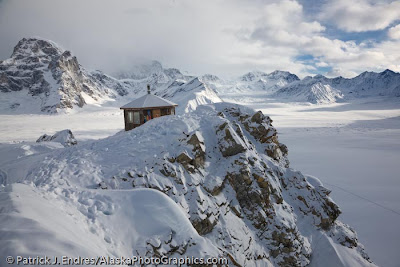Finally, after nearly two years, we got back in the groove with an E-Newsletter, which will be sent out more frequently than our previous record! You can view it in its full format on our website-it looks a little prettier. If you would like to receive this Newsletter in the future, you can Register on the site and check the little box that says notify.
Greetings from Fairbanks, Alaska
Winter has lost its grip here in the north, and soon new color and new life will burst forth on the surrounding hillsides. It’s been a long, long time since our last newsletter update, and since then, lots of changes have taken place on our website. In addition to that, abundant travel plans are scheduled for the upcoming nightless summer months in Alaska, so expect to see more new images.
Video Website Tutorials

We now have more than 20,000 searchable images on our website, and are always seeking ways to make them more easily accessible. We made a few on-line Video Tutorials that discuss the site's basic features with hopes towards helping visitors maximize the functional use of the website. This includes the various methods of searching as well as a discussion of the display options and Lightbox Utilities, which include the ability to save, email, print, and download a lightbox.
Image Stacks

When viewing a page of search results, similar thumbnails have been grouped into a "stack" to allow more image variation on the monitor screen. This is indicated by the little yellow arrows under the thumbnail. You can toggle through the stack by clicking on the yellow arrows.
Watermark Free Comps
If you are a photo researcher or designer, we offer the ability to download 1200 pixel watermark free comps directly from the website. Even better is the functionality to download an entire lightbox of watermark free images to your desktop in one click using the Lightbox Utilities. To get this privilege, you need to register (very simple process) and send us an email requesting the feature be associated with your account.
Alaska Children's Book

"Alaska" by Shelly Gill and Patrick J. Endres. Blending poetry and humor, Alaskan author and adventurer Shelley Gill takes readers on a seasonal tour of the 49th state. Veteran photographer Patrick J. Endres captures Alaska’s enduring spirit in his crisp images. Hardcover: $19.00 includes shipping, autographed by the photographer.
How to Photograph the Northern Lights
This popular article is specifically written to address photographing the aurora borealis with a digital camera. It discusses:
- Where and when to view the aurora
- How to dress and deal with cold weather
- What kind of camera and gear you need
- File formats, exposure and histograms
Website Additions
Featured Prints
Wading through thousands of photos can be overwhelming. To help out, we have listed a few galleries of popular photos in our
featured prints section, the help streamline the browsing experience.
2009 Fairbanks & Interior Alaska Calendar
The 2009 Wall calendar will be available in June, in its fifth season. See previews on-line.

On-line Slide Shows
We added a few new slide shows from some Beyond Alaska travel destinations: You can view them from our Slide Shows page.
- Wildlife of the world
- World Travels
- Africa Portraits
Thank You
Thanks for your past patronage and interest in our Alaska imagery. Stop by and visit again at www.AlaskaPhotoGraphics.com.
 Great Gray owl in Black spruce trees.
Great Gray owl in Black spruce trees.

































